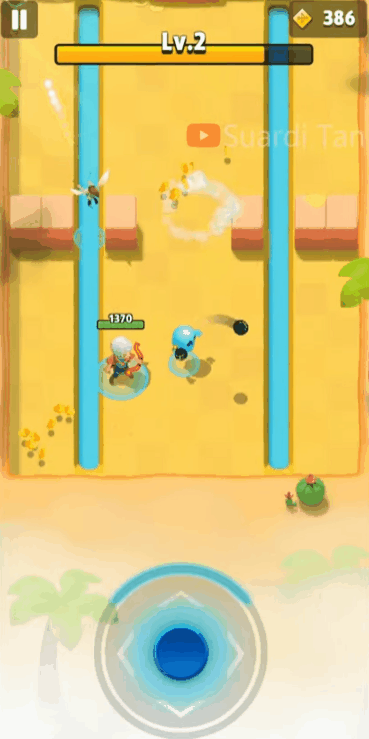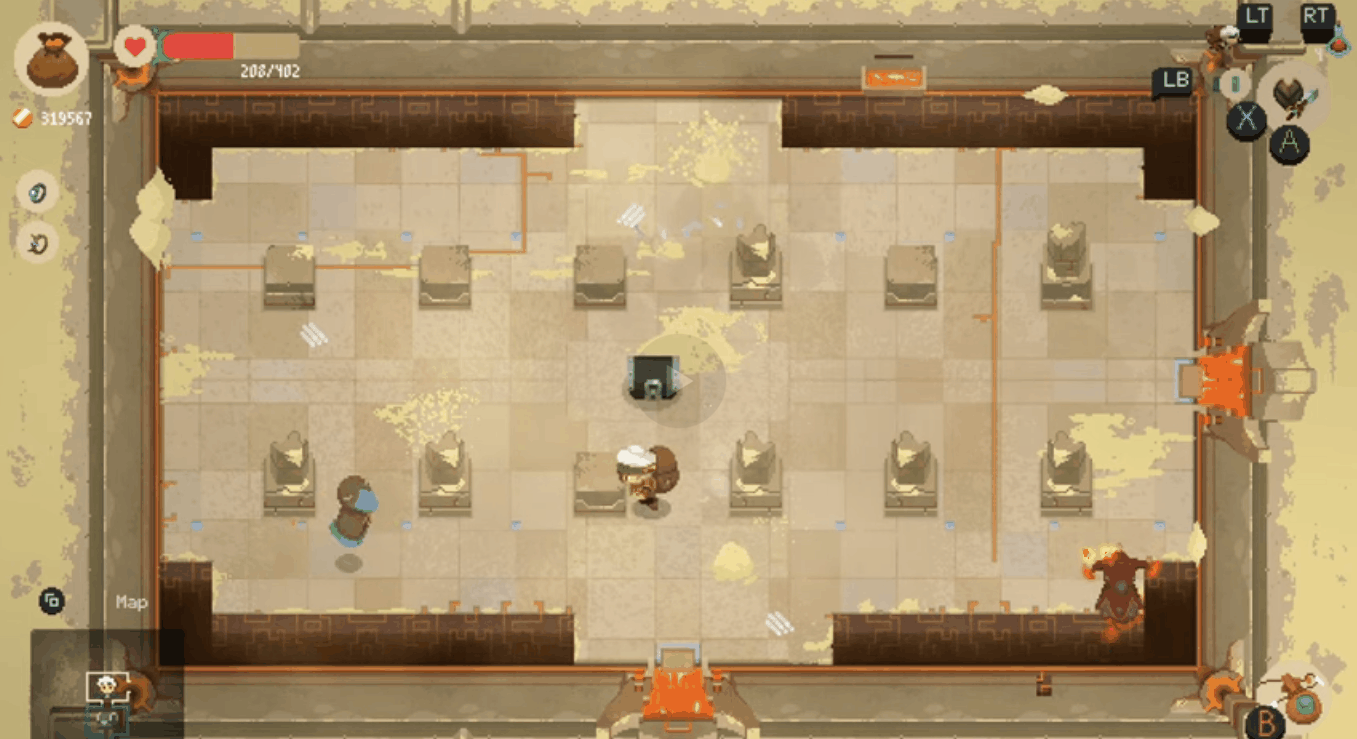Movement behaviour
In terms of how enemies move, we can find 4 main ways to calculate their trajectory:
-
Chase -
Patrol -
Static
In the games we have analysed, we found the basic movement patterns: tracking, random and static. It is true that in some games other than those analysed, we found enemies that use artificial intelligence to calculate a route that cuts off the player. Because the enemies' movement speed is usually much slower than the playable character's movements, this predictive route is, in practice, too similar to the route calculated in the tracking or chase method.
Chasing the player
The method of movement of most melee attack enemies will be to follow the player, as they have to get close to the player to attack.
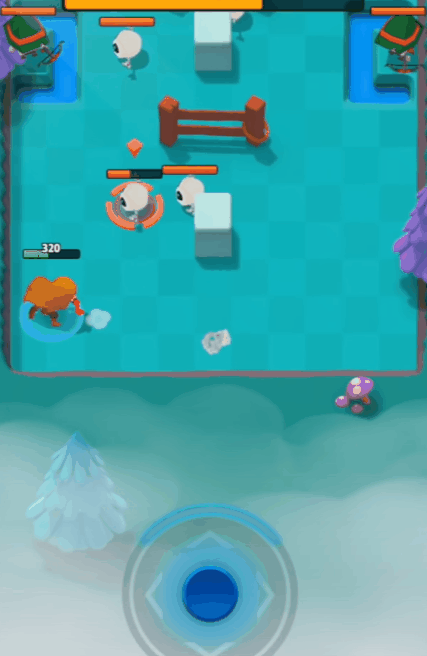
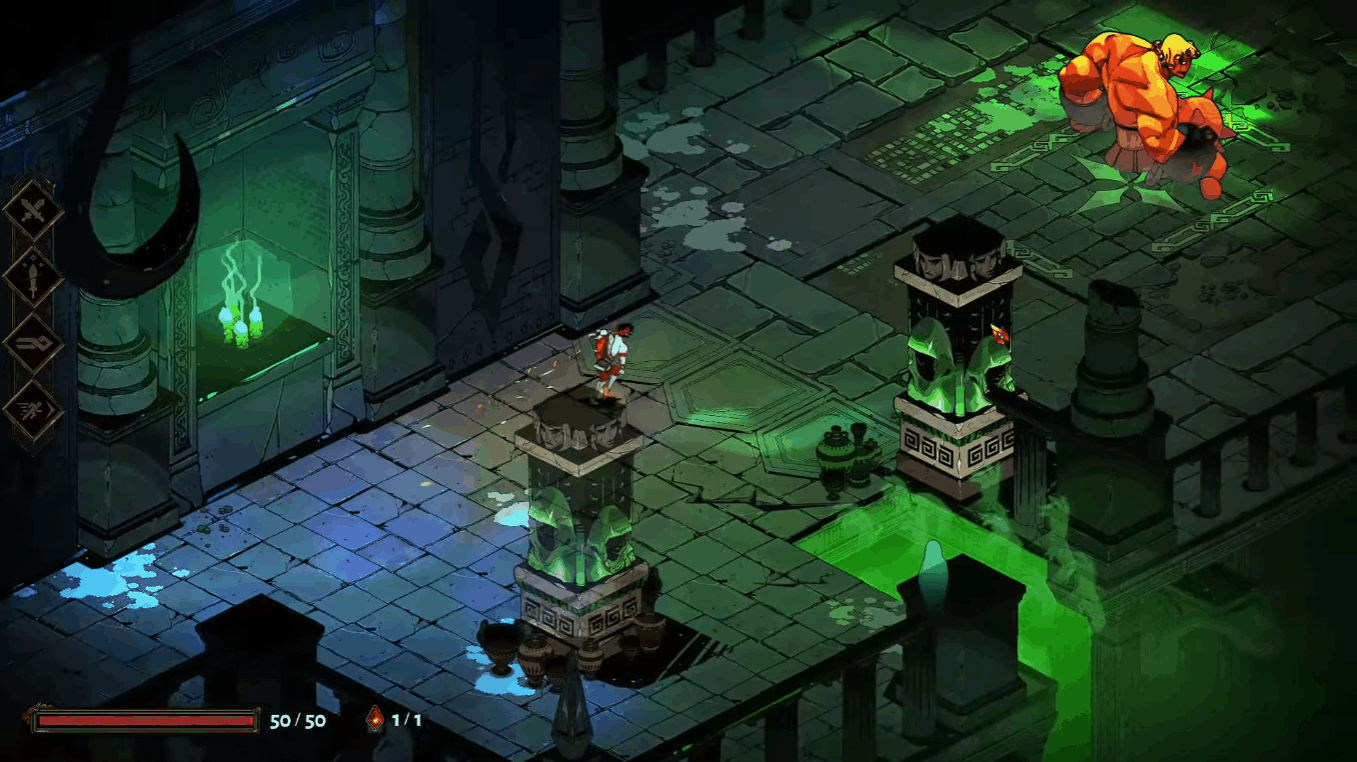
On other enemies with medium and long range attacks this behaviour can also be seen, they simply track the player until they are in range of their attack or ability.
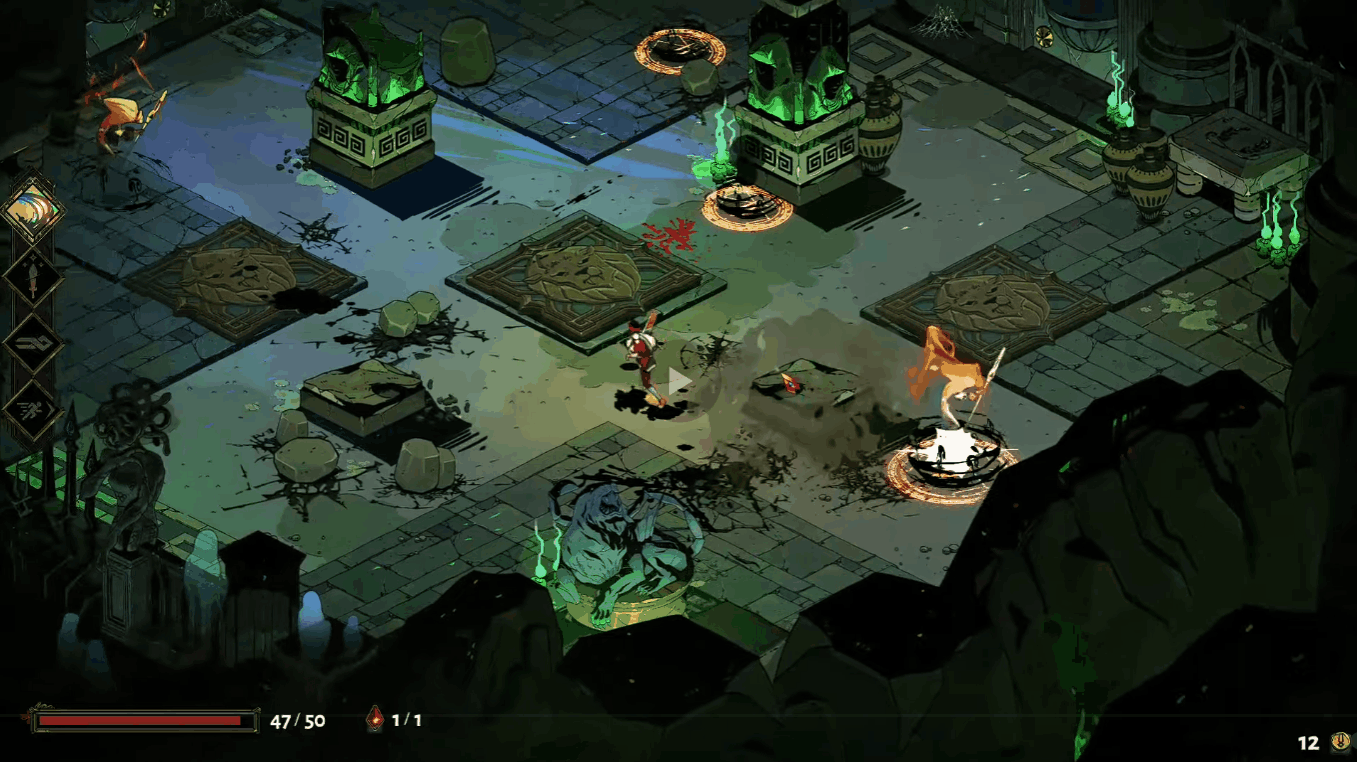

Patroling
The random location method will be most commonly used on enemies with ranged attacks. It is a way for these ranged attackers to get new angles from which to attack the player while avoiding the difficult terrain, and also to indirectly defend themselves, as in most cases they would run away from the character. The way this movement is calculated is through a range, the enemy has a range within which a random position is determined and the enemy goes there. Once he reaches this position, the process is repeated.
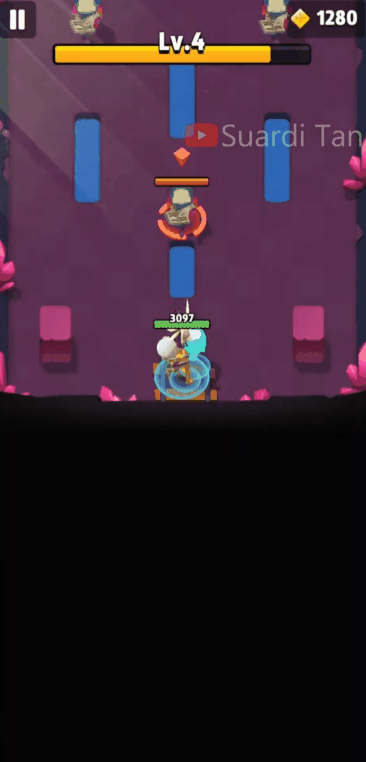
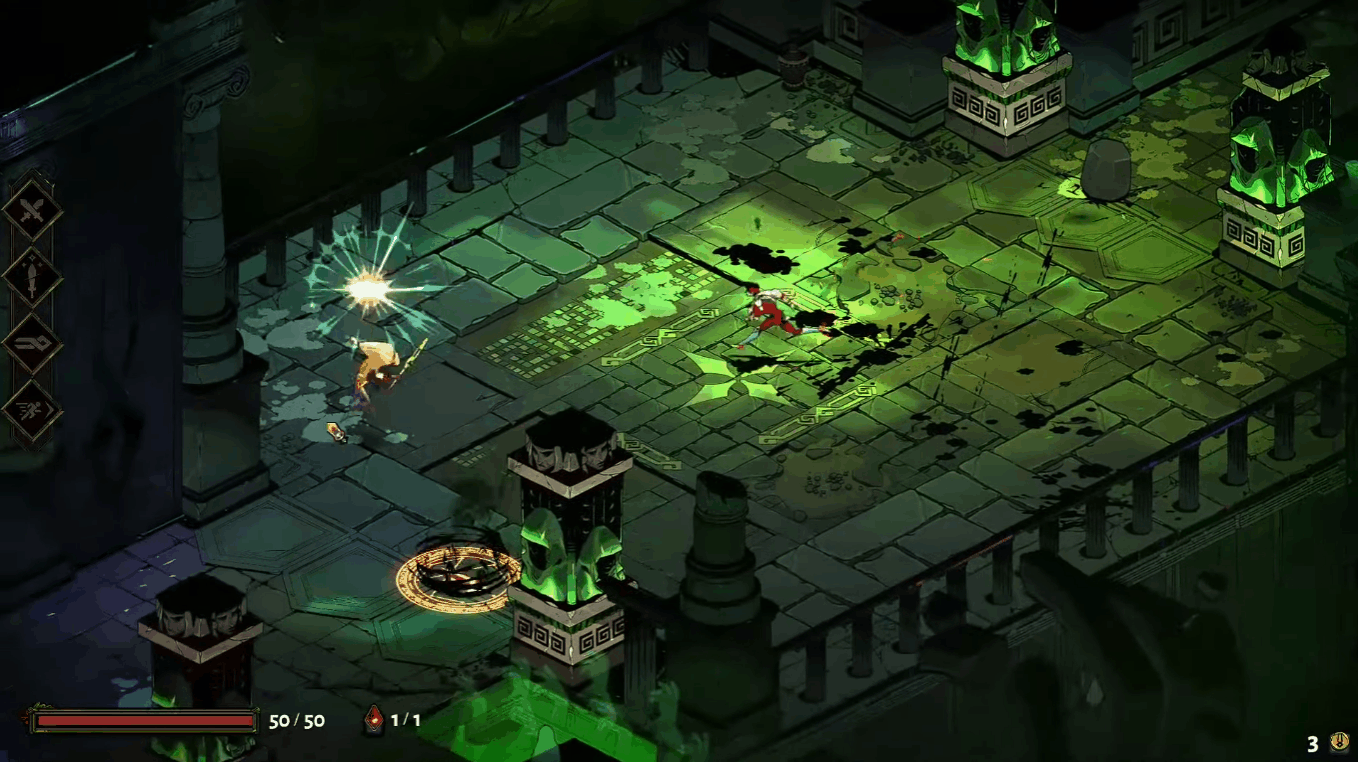
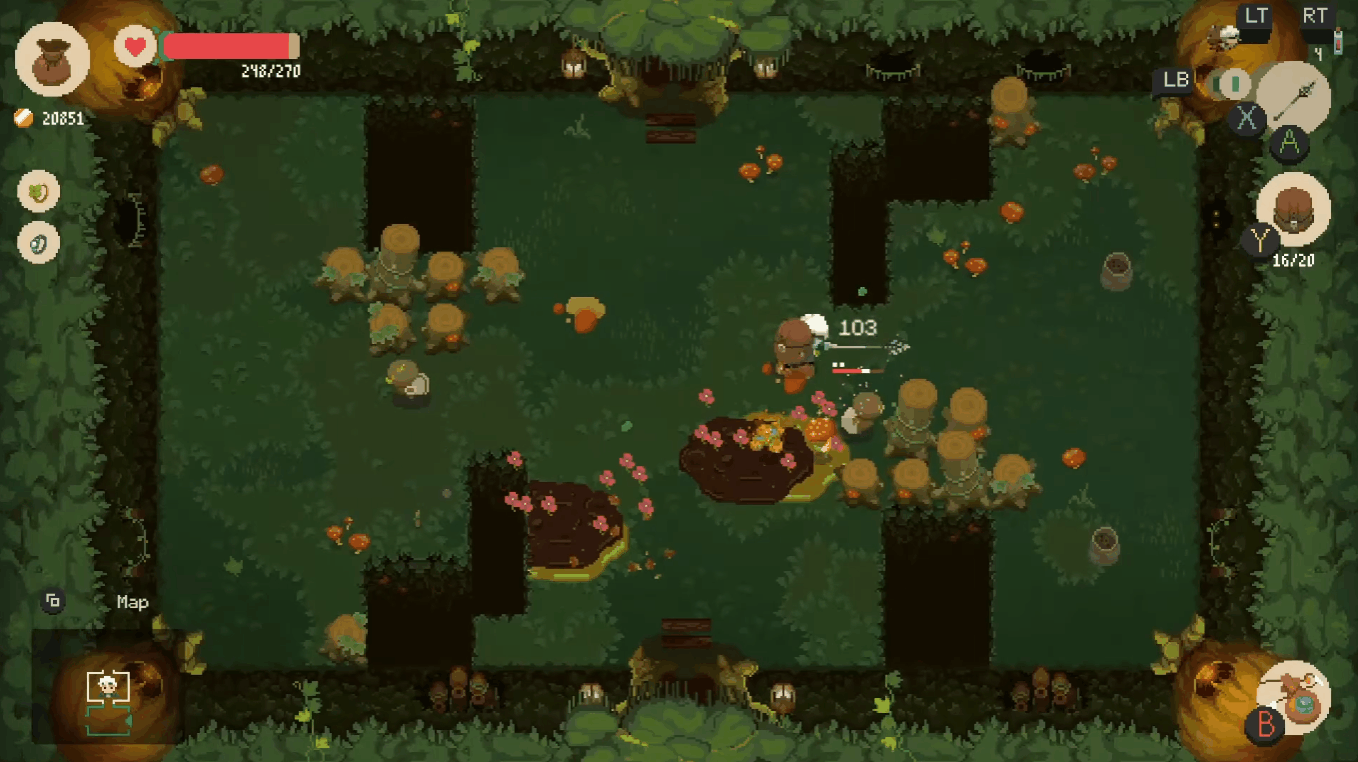
Another way to implement the random trajectory method is on some kind of fast melee enemy, which being so fast and making such unpredictable movements makes it a very different kind of skill, which turns a behavioural and movement mechanic into its attack skill, which we must dodge.
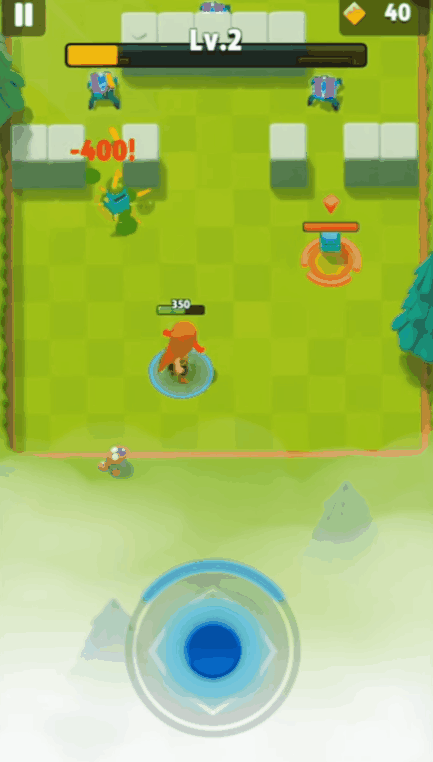
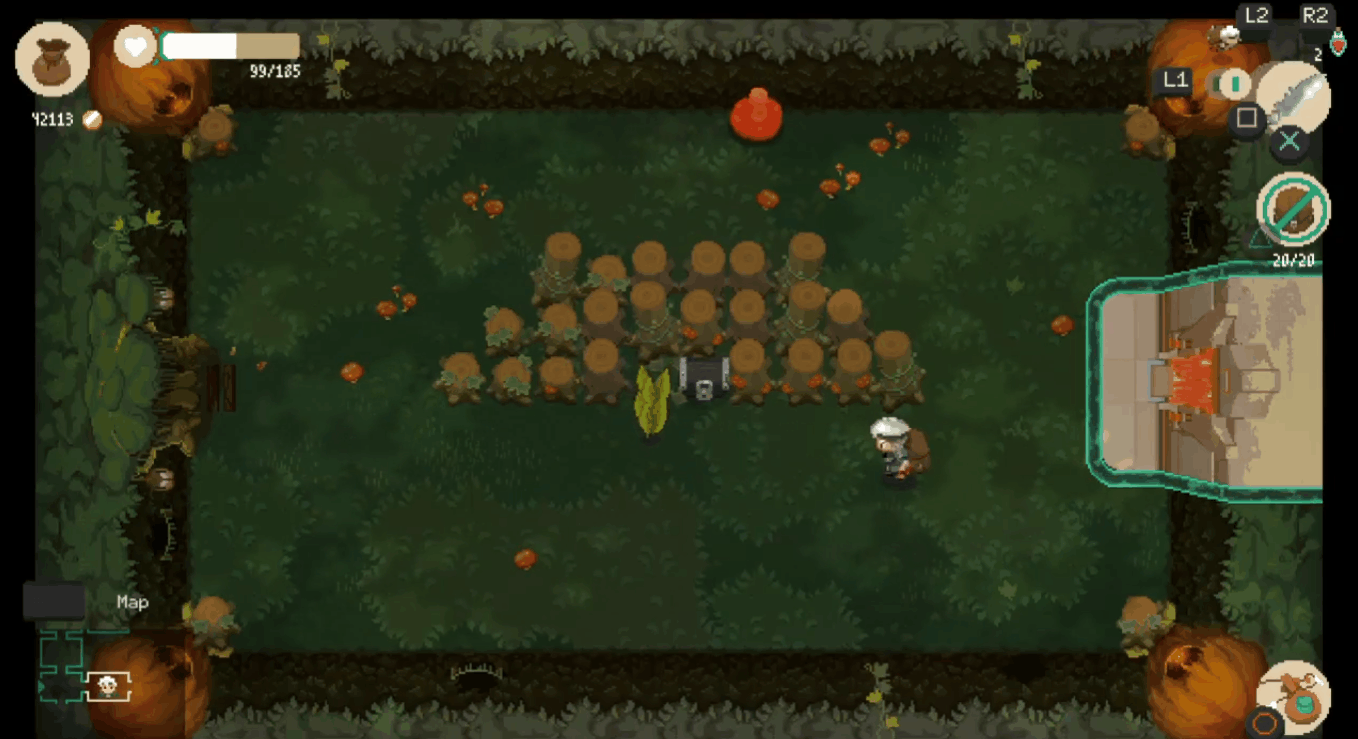
Static
In the case of static enemies, one could simply say that they lack movement mechanics and behaviour. As a general rule, enemies that lack such mechanics are due to the complexity or difficulty of their other mechanics, such as attack mechanics or passive abilities. They tend to be long-ranged enemies that fire a large number of projectiles, as these are a big problem for the player, being static makes them more predictable and more vulnerable. So this lack of movement is a way to reduce the difficulty in those cases.
A static enemy will remain in the same position designated by the designer, which may be a design decision to put the player in more trouble. An enemy strategically placed in a privileged position may no longer be privileged if a different behaviour is added to it, as it will move out of that position upon interaction with the player.
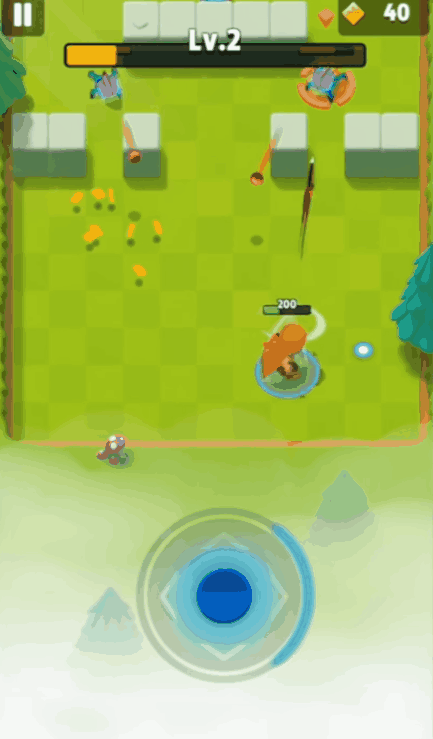
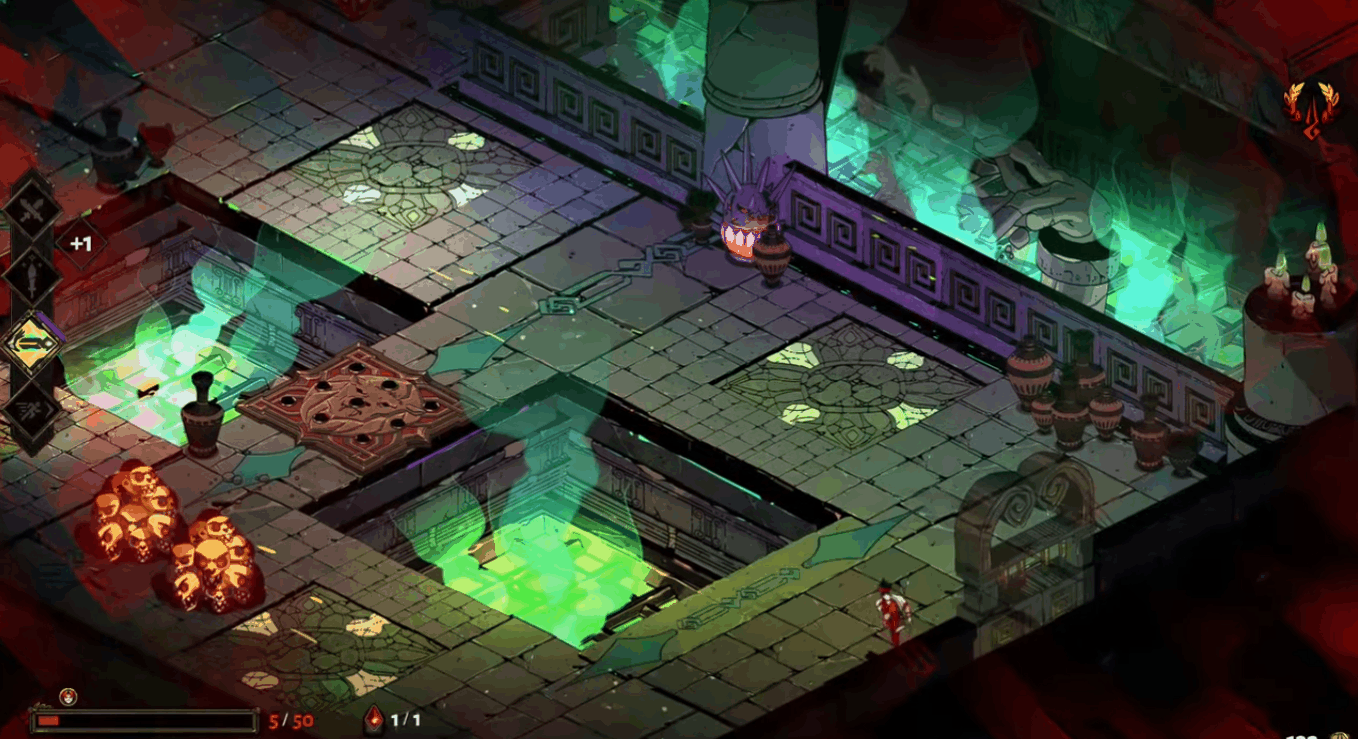
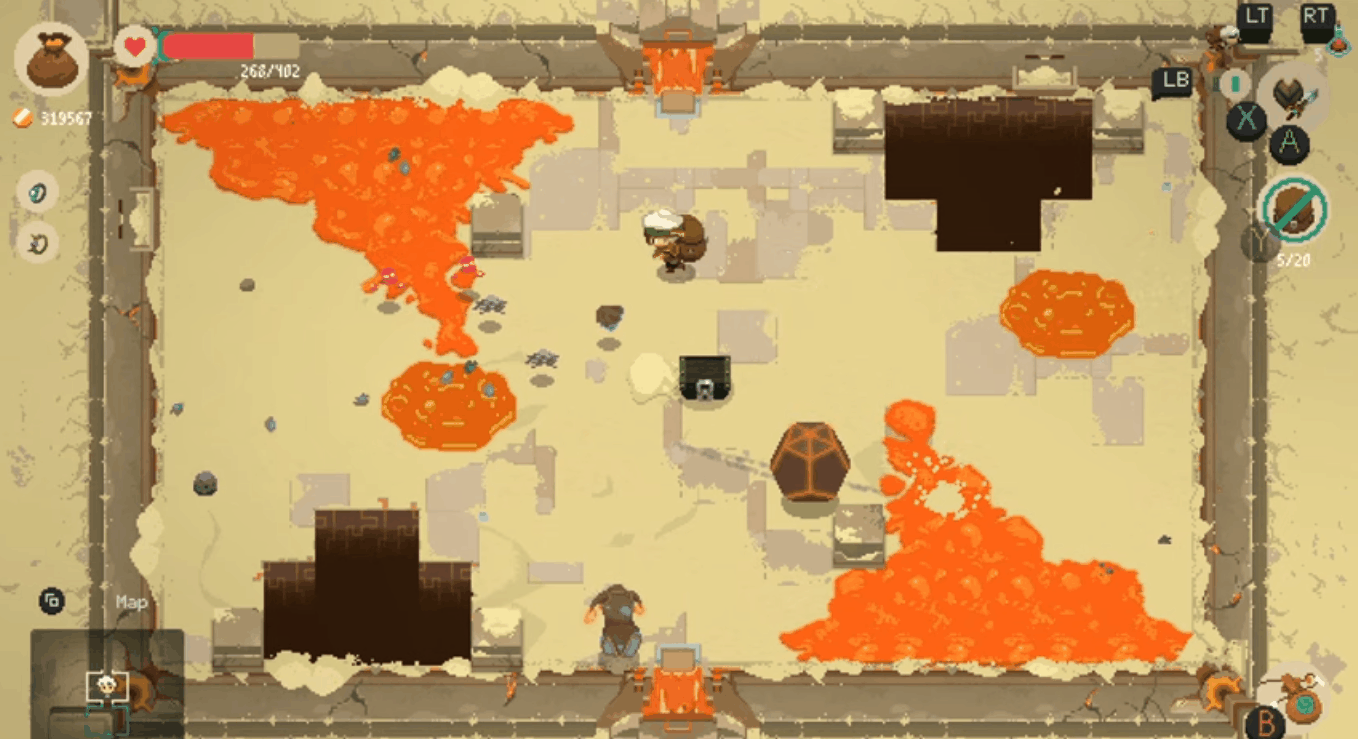
There are a variety of static enemies, enemies that have the ability to move or an ability that allows them to change position. They fall into this category due to the fact that they are mostly anchored to the ground for a prolonged period of time making them more vulnerable. We find enemies that move slightly between attacks.
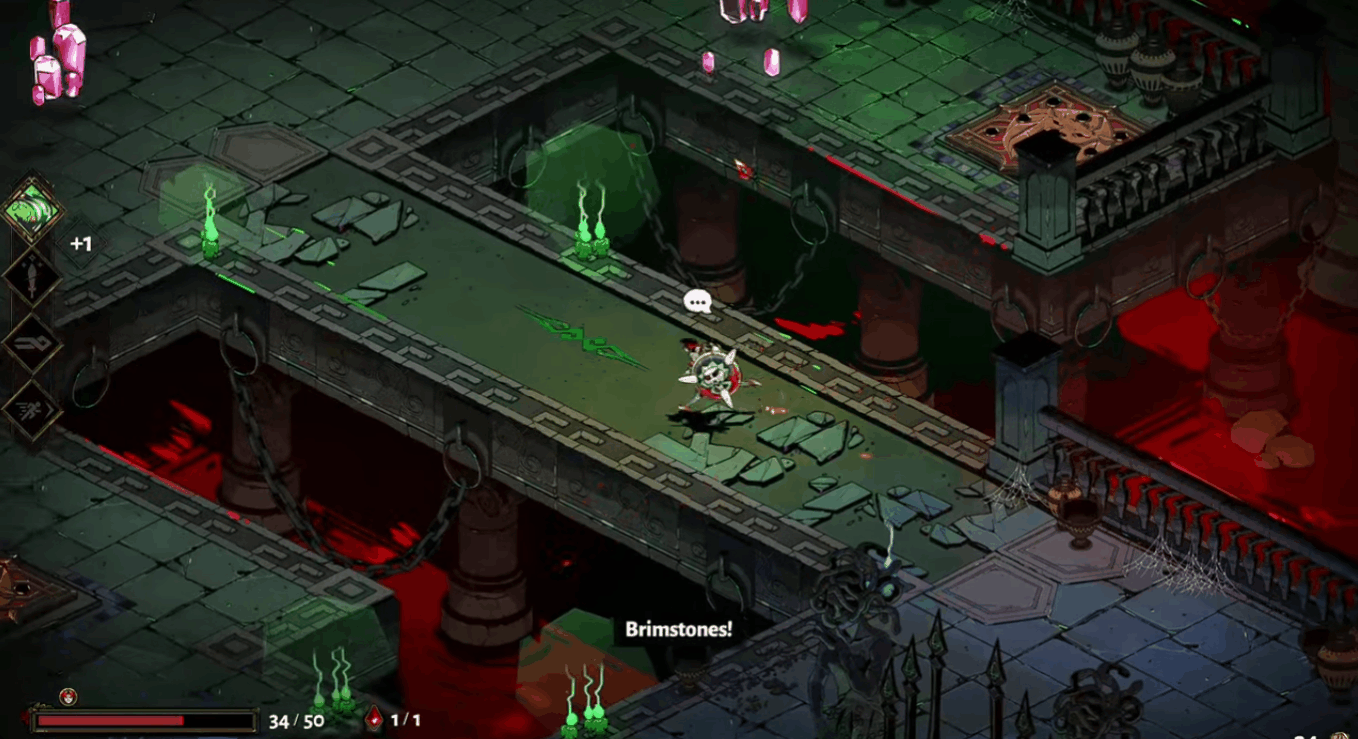
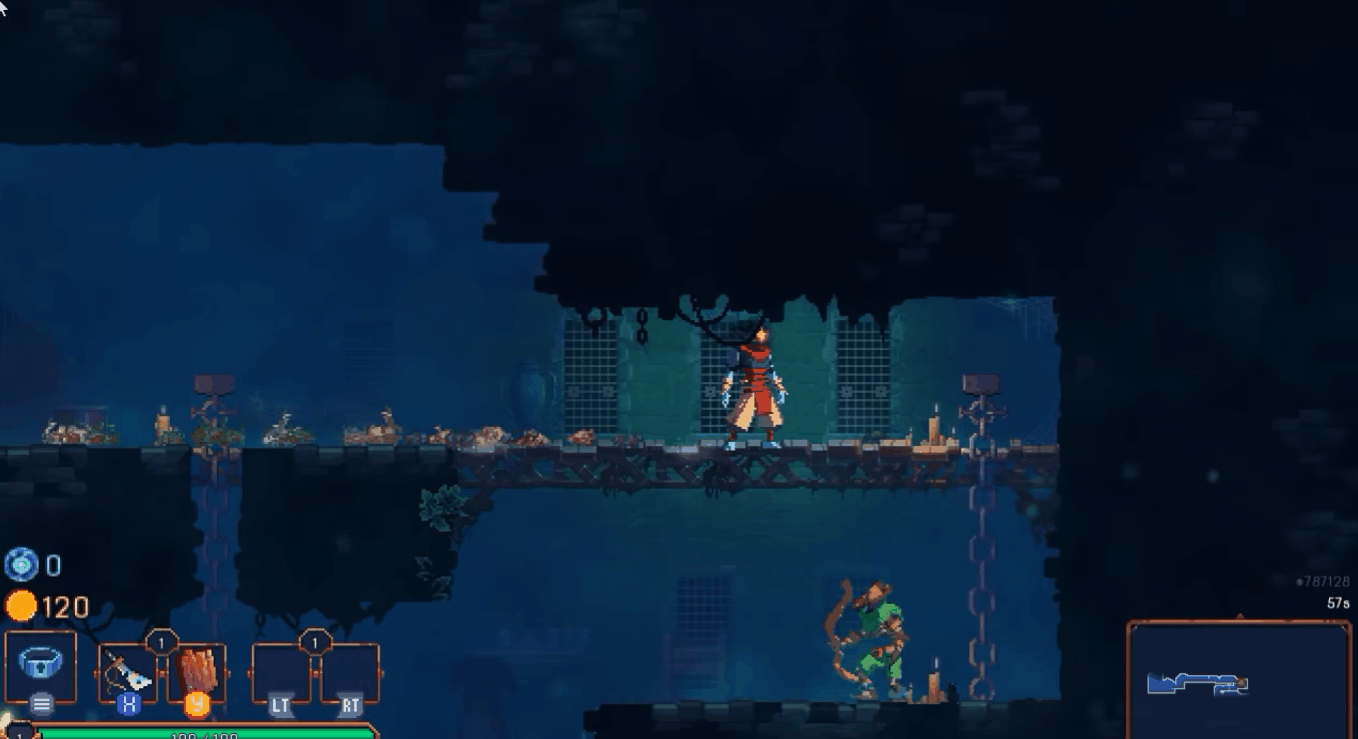
And enemies with some movement ability such as teleportation, which they use to protect themselves after an attack.
